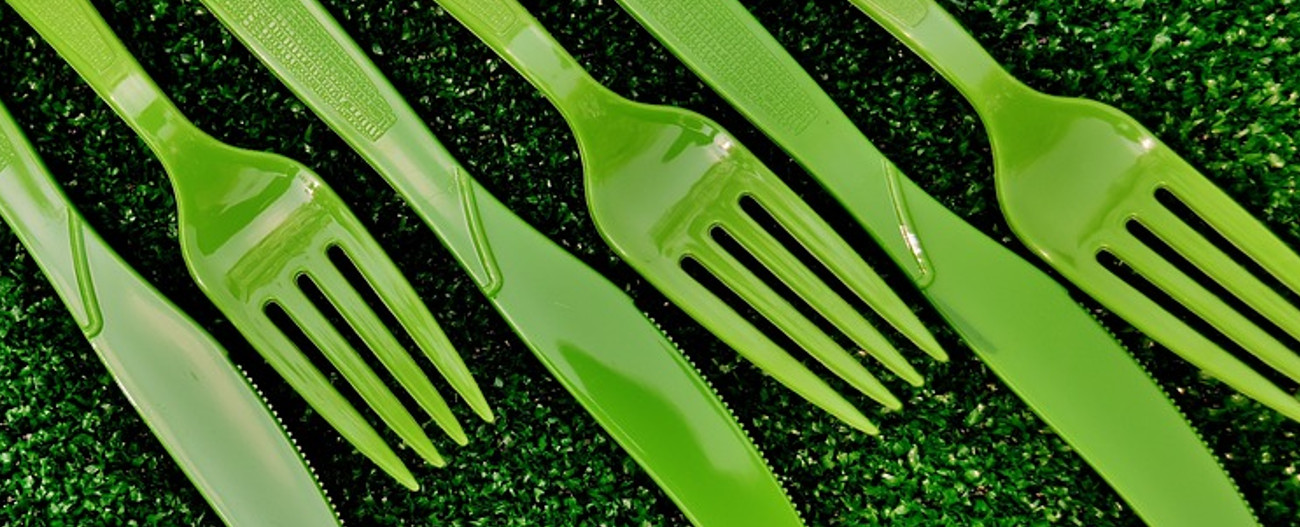Recently in the news, there has been a number of high profile companies, including the BBC, pledging to ban the usage of single-use plastics at their sites. The Queen has also prohibited plastic bottles and straws from the Royal Estates as part of a plan to cut back on the use of plastic at “all levels”.
Over eight million tonnes of plastic ends up in the oceans each year. This huge total comprises of man-made plastics that are not bio-degradable, which means they will not rot away, and not all plastics can be recycled. All of this plastic in the sea is having a huge effect on marine life, as highlighted in BBC’s Blue Planet 2.
While single-use plastics are undoubtedly bad for the environment, what are the other options and how might these have an effect on the environment? We’ve done some research into the most commonly used single-use plastics, their alternatives and replacements.
Carrier Bags

According to an Environment Agency report, a cotton bag needs to be used 131 times to ensure a lower global warming potential than the usual supermarket 5p carrier bag. If shoppers reuse around 40% of their plastic bags as bin liners, that multiple rises to 173 times. This is down to many factors including the energy required to process cotton into cotton yarn. This doesn’t take into account any washing of the bag, which would increase the ‘break-even point’.
A lot of shops changed to using paper bags as these have been exempt from the 5p charge, but the same report suggests that a paper bag needs to be re-used a minimum of three times before it’s better in terms of limiting global warming.
So, which bag should you use? Using a cotton bag hundreds of times for several years will be the most environmentally friendly, however, if you’re not going to do that, re-using plastic bags and ending their usage as a bin liner is the next best option. If you can, always avoid taking a new plastic carrier bag.
The full table from the report can be seen below.

Disposable Cutlery
Both are relatively difficult and expensive to recycle which can have an adverse effect on the environment. Furthermore, neither plastic is biodegradable. The majority ends up in general waste bins and end up in landfill, leaking chemicals into the soil and groundwater.
These plastics can be burned to break down the compound but when incinerated, plastic releases high amounts of fossil carbon as CO2 into the environment. If plastic is not separated properly before incineration, then this can have a dramatic effect on the greenhouse gases produced.
An alternative is the growing presence of more robust wooden cutlery, in particular the use of bamboo in production. Although it takes more resources to produce wooden cutlery, it has less impact throughout the entire lifecycle. Bamboo, in particular, is beneficial for the environment, producing 35% more oxygen than a traditional tree.
However, is it really that much better? Although in theory, it is more compostable, it comes at a higher price point and if certain woods such as Cyprus or Cedar are used in the production process, this may contaminate the food with oily resins and strong odours. Similarly, the cutlery made from recycled wood might not be safe if proper care is not taken during the manufacturing process.
Aren’t we as a race already destroying enough trees? The best alternative to any disposable cutlery is metal. Whilst it needs washing after use, it should last for many years and can be used hundreds of times. When metal cutlery comes to the end of its life, it can be easily recycled, further lessening the environmental impact.

Plates and Bowls

This comparison took into account multiple environmental impacts and was dominated by fossil fuel use which correlates strongly with global warming impact.
Further research shows that the ‘breakeven point’ could be much lower than 50, with another report examining food service ware in cafeterias at the University of Colorado at Boulder as part of a 2013 study. It found that reusable polycarbonate salad bowls had lower global warming potential impacts than single-use compostable bowls after as few as 10 uses.
Using reusable plates and bowls, such as china or ceramic, means that they can be used many hundreds of times before needing to be replaced. These require resources to wash them, but being mindful of water and chemicals the environmental impact will quickly be lower.
Coffee Cup
However, if your business isn’t part of one of these schemes and you want to be greener, what can you do?
You could buy a reusable cup, but how many times do you need to use this to benefit the environment? According to KeepCup’s website, the environmental breakeven point is 15 uses. After your 15th coffee in a reusable cup, you’re helping to save the planet.
The same report claims that a ceramic cup needs to be reused 39 times before being more environmentally friendly, although a Starbucks report claims that they need to be used 70 times. Ceramic mugs are designed to be used hundreds of times and would very quickly reduce your carbon footprint.

The key is to avoid taking single-use plastic in the first place and use a more sustainable version that will be reused over and over again.
Maybe the key to less waste is less haste #LessHasteLessWaste
http://www.design4x.com/ PDF
https://www.cleanwateraction.org/ PDF
https://grist.org/ Which Disposable Utensils Are Lightest On The Land/
https://unpackageme.wordpress.com/ The Blunt Truth Behind Plastic Cutlery/
http://www.chefast.com/ Advantages Of Disposable Wooden Cutlery/
https://www.gov.uk/ PDF

 Sales 03308 285 687
Sales 03308 285 687 